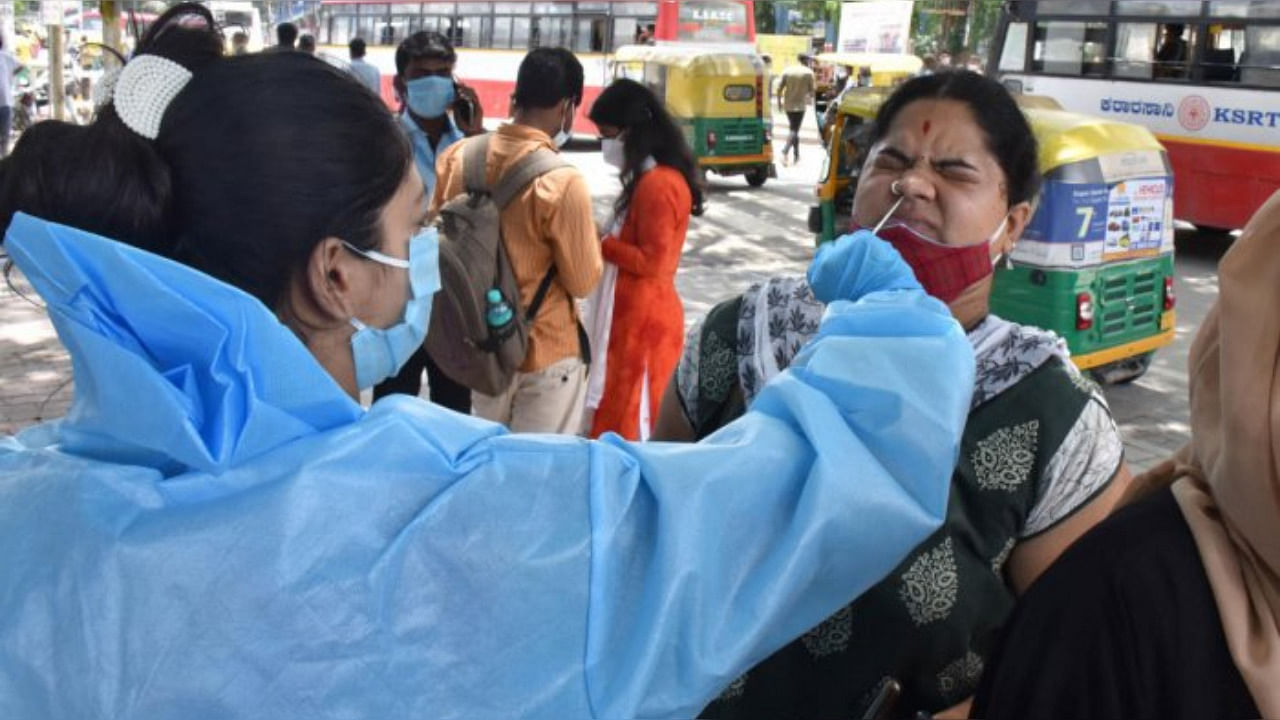
With Karnataka imposing fresh curbs to contain the slow but steady rise in Covid-19 cases, there is a special focus on keeping things under control in Bengaluru. The state capital had reported a disproportionately high number of infections during the devastating second wave of Covid-19.
In line with the recommendations of the Technical Advisory Committee (TAC), the government has intensified surveillance in Bengaluru and districts that border Kerala and Maharashtra. As the BBMP's special commissioner for health, D Randeep has been overseeing the civic body's response to the pandemic. DH caught up with him to get a bird's-eye view of the Covid situation in the city, the strategy to contain the possible third wave, the vaccination status and the state of public health infrastructure. Edited excerpts of the interview:
July was disappointing for vaccination. The BBMP administered only 19.25 lakh doses though it has the capacity to give 1.5 lakh doses a day. Has the BBMP set itself any target for August considering that the Centre has promised Karnataka one crore doses for the month.
We have been always ready to administer one lakh doses a day. If the supply is increased, we will administer 35-40 lakh doses a month. The current constraint is to have a micro plan ahead of time. The mobilisation has to happen via NGOs and RWAs. But if there is no consistency in vaccine supply, and if adequate time is not given for awareness and mobilisation, then we will fall short of the target set for ourselves.
Has the Covid third wave begun in Bengaluru?
The indications are that we are at the crossroads. The curve can go up very soon. The R0 (reproduction number) is almost touching 1, indicating that every Covid patient is infecting at least one other person. Generally, R0 of 1 is a critical mass to trigger the third Covid wave. There will be an increase in cases if we do not do a certain number of vaccinations daily.
Why is it that Bengaluru always reports more Covid cases a day than other metros like Mumbai, Chennai, Kolkata?
More than the direct comparison with these metros, we actually need to compare the number of tests per lakh or per million population in these metros. Also, it is important to verify whether the testing was targeted. Bengaluru is doing 60,000 tests, which is a large number in a low-case scenario. Besides, we are testing micro-containment clusters, which is the lowest threshold in the country. We have 136 clusters in the city because we consider every three cases as a cluster.
What is the BBMP's strategy when it comes to children and Covid. The third wave is likely to impact children 13 times more intensely than the second wave did.
We have already held training sessions for regular MBBS doctors in paediatrics because we don't have many paediatricians. Paediatric beds have been identified in all private hospitals as well as in paediatric specialist hospitals. Among our own (BBMP) hospitals, some of our maternity homes are being converted into paediatric wards. The infrastructure would be ready in a week or 10 days. All put together, we may have 2,500 to 3,000 paediatric beds, of which, critical care beds are about 500-600.
Some zones have reported 80% vaccine hesitancy. How will the BBMP crack this?
Our door-to-door survey found that 22% of over-45s are yet to receive even one dose. The survey showed that vaccine hesitancy is a bigger reason than migration (for low vaccination). The areas that have reported low vaccination are slum pockets. Also, the seropositivity there is high, which indicates past exposure to the infection. Many people from lower-income groups were affected in the first wave but not as many in the second wave. DJ Halli, which reported many cases during the first wave, hardly has any cases now. We are working on micro-vaccination plans in these wards and raising awareness.
Has the BBMP put in place any mechanism to record infection among vaccinated people?
We did not have any mechanism until August 1, but now our triaging application has this feature where this data is captured. Some early data is flowing in now. Hospitalisation data is captured on the Covid Hospital Bed Management System whereas vaccination is captured on the Co-WIN portal. Unless there is an exchange of information between these two distinct portals, we won't be able to correlate (the data).
As many vaccinated people are being hospitalised for Covid, is the BBMP considering sequencing the genomes from their samples?
We did not consider testing the samples of hospitalised people, but now we plan to do that. What we are sequencing are the samples collected from clusters, apartments, representative samples of the elderly and the younger population just to see if they have new variants. Now, we plan to send samples of those who are under critical care without comorbidities and are aged under 50 to study whether they have any of the new variants.
Check out DH's latest videos:
